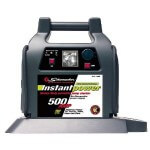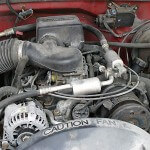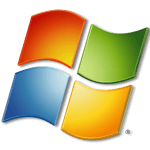Kinds Of Laptops
Read about the kinds of laptops you can buy. The laptop as we know it in modern times is a more compact version of a regular desktop computer with a QWERTY keyboard and LCD screen. More than three decades have passed since the concept of a portable personal computer was introduced. Initially, several feasible prototypes of the modern laptop have been designed, including the Dynabook (by Xerox) and the PALM processor (by IBM). The portability of the gadget was the main reason the concept was well-received by experts and focus groups at that time.
There have been many versions created over the years, but the prototype that showed the most resemblance to the kinds of laptops we use today was conceived in the 1980s primarily for space exploration and industrial use as the technology was too expensive for regular consumers. This predecessor of the modern laptop had the flip screen and foldable design of modern models and a colored screen.
Kinds of Laptops in the Modern Age
Classic Portable – The classic laptop is undoubtedly the most popular and most accessible to average consumers with big computer brands competing for dominance in the laptop market. This laptop is meant as a portable version of a desktop computer, with the same operating system and functions. A special type of bag equipped with pockets to accommodate various peripherals has been designed for transporting and protecting the classic laptop. The flat panel screen is usually 15 inches in size, and an optical disk (CD) drive is included. There is a tangible keypad that is only slightly different from a full-sized keyboard.
The first kinds of laptops are heavier because of the many internal add-ons required to provide the same performance as a desktop computer. The presence of a bulky battery may have contributed to the considerable weight.
A beefed-up version of a classic portable laptop is available, and this is called the ruggedized laptop. Among the different kinds of laptops, this is probably the most expensive. This laptop is usually not available in stores, but are sold directly (usually made to order) by computer hardware manufacturers to private companies for industrial use. The laptop is usually covered by a protective rubberized case, complete with security locks, port covers and a sturdy strap or handle for easy transportation. This kind of laptop is meant to endure extreme environments, with many built-in functions to resist vibrations and high temperature. Many military bases use ruggedized laptops for their off-base operations.
Netbook – This lightweight version of the classic laptop is gradually gaining popularity, especially among people that use the device for internet browsing, listening to music and watching movies. The main differences of a typical netbook from other kinds of laptops include a tangible mini keyboard, longer battery life, absence of a CD-drive, and smaller screen size (from 5 to10 inches, depending on the brand). A netbook may also be limited in terms of the type of operating system it can accommodate and the amount of data it can store. For a user who has grown accustomed to the features of a conventional laptop, a netbook may seem slower because of the limitations in data storage and more difficult to use for typing text because of the smaller keyboard. Another version of the netbook is the subnotebook which has the same capabilities as a classic laptop, but smaller and more compact.
Tablet – A tablet is considered a laptop computer despite its resemblance in size and design to a PDA (personal digital assistant) because it has the basic functionalities that can be found in other kinds of laptops. The main distinctive feature of a tablet is its touch-screen functionality. A typical tablet is slim and can fit inside a handbag, making it more portable than a classic laptop or a netbook. Tablet laptops from different brands differ from each other in terms of the kind of keyboard they have, as well as the operating system used. While most tablets do not have a tangible keypad integrated in the design so that a user has to type in text using a virtual one, there are several models with USB ports to accommodate an external keyboard and a mouse.
Because of the high demand for tablets, computer companies have come up with wide array of models for consumers to choose from. Hybrid tablets resemble netbooks because a tangible but detachable keyboard is included. When the tablet is detached from the keypad, the device returns to its normal touch-screen functionality. Dual-screen tablets are called booklets. One of the screens serves as a virtual keypad.
As modern technology evolves, more kinds of laptops are being introduced to consumers, from simple models for personal use to complicated models meant for industrial use. Variations in size and portability, along with functionality, differentiate one kind from another.






